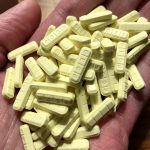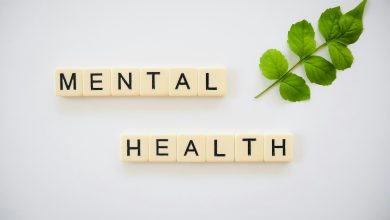Xanax Ruined My Brain

Your brain is who you are. It’s what allows you to think, breathe, move, speak, and feel. It’s just 3 pounds of gray-and-white matter that rests in your skull, and it is your own personal “mission control.” The brain is always working, even when you’re sleeping. Information from your environment makes its way to the brain, which receives, processes, and integrates it so that you can survive and function under all sorts of changing circumstances and learn from experience.
Networks of neurons send signals back and forth to each other and among different parts of the brain, the spinal cord, and nerves in the rest of the body (the peripheral nervous system). However, drugs can interfere with the way neurons send, receive, and process signals via neurotransmitters. Some drugs can activate neurons because their chemical structure mimics that of a natural neurotransmitter in the body. This allows the drugs to attach to and activate the neurons. Although these drugs mimic the brain’s own chemicals, they don’t activate neurons in the same way as a natural neurotransmitter, and they lead to abnormal messages being sent through the network.
Other drugs can cause the neurons to release abnormally large amounts of natural neurotransmitters or prevent the normal recycling of these brain chemicals by interfering with transporters. This too amplifies or disrupts the normal communication between neurons.
What is Xanax?
Xanax is a brand of alprazolam, a powerful benzodiazepine that is used to treat anxiety and panic disorders by decreasing abnormal excitement in the brain. The medication comes in the form of a tablet that quickly dissolves in the mouth, an extended-release tablet, or a concentrated oral solution.
Benzodiazepines can have therapeutic anti-anxiety, anti-convulsant, muscle relaxing, and sedative effects. Xanax works by increasing the effects of a brain chemical called gamma-aminobutyric acid (GABA), which promotes calmness and produces a relaxed feeling. The drug decreases the level of excitement in the brain to treat anxiety and panic disorders.
Alprazolam is among the most prescribed benzodiazepine drugs in the U.S. and is among the benzodiazepines most often found in the illegal market, according to the Drug Enforcement Administration.
Xanax is often prescribed for mental health disorders related to anxiety. It can be used to treat general anxiety, panic disorder, social anxiety disorder, and phobias. It can also be used to treat seizures. For people who suffer from anxiety, it can create a sense of relief to focus on their lives without issues of anxiety or phobias plaguing them. When used as prescribed, it can calm people down and make them feel relaxed.
Xanax can also reduce physiological symptoms of anxiety and fear, such as a racing heart or hyperventilation. These drugs are so often prescribed because they work well on anxiety and they’re cheap.
However, many people use Xanax for nonmedical reasons, taking it in larger doses or more frequently than prescribed because it can create a euphoric feeling, especially at higher doses. Xanax tends to start acting quickly after a person takes it, and the euphoric effects of the drug will usually manifest themselves within about an hour after taking it.
A tendency has grown in some social circles to view Xanax, as a type of “alcohol” in pill form. It’s become socially acceptable among these groups of friends to get together and share Xanax with one another. Of the 30.5 million people who used benzos in 2015, 17.1% misused them. Misusing Xanax or combining it with other substances like alcohol can amplify its effects, but the results can also be deadly.
Along with recreational use, many people rely on Xanax to deal with issues like situational anxiety without having to commit to therapy, which can be expensive and time-consuming. Xanax is popular in America, for example, because there is a tendency for people to love things that are looked at as a quick fix. Xanax isn’t a long-term medication, so some people “take it when they need it” for relief. The temporary relief they feel can help in a fast-paced world with constant exposure to negative world news, stressful jobs, and uncertainty.
In this article, we will share the story of a young man who fell victim to the snare of Xanax and how it ended.
Xanax Ruined My Brain
Johnny does not remember much about the first time he took a Xanax. “No one does … you just blank the whole night,” he says, playing with a pair of white headphones around his neck.
“I heard about it as being an American pill that makes you all dopey and stuff. My friend and I took it together. I don’t even remember where we got it from, but at that time, I remember they were a lot harder to get,” he says.
Now, over a year later, sitting in his kitchen, he describes the benzodiazepine drug as “the devil”. The 16-year-old, who lives with his parents in an affluent suburb of south-west London, says there was a time when using it was rife in his friendship circle.
“It’s harder to get now after the darknet AlphaBay marketplace shut down, but a year ago nearly all of my friends had a Xanax problem at some point. That’s about 20 to 30 people,” he says.
“I mean you can, of course, still get it now but it’s more expensive. But there is still a huge demand for it, massive demand.”
Leaning forward and playing with a salt shaker on the table, Johnny explains that his problem with the drug developed after a friend introduced him to an older man called Julian who dealt it. This man tried to enlist Johnny in selling Xanax tablets, sending a bulk order of the drugs to his house.
“This was in about March last year. I was 15 at the time. It was stupid to give him my address but he told me there was no risk. He told me he was sending 60 pills but what arrived was 1,600 Xanax tablets.”
He adds: “Julian said he didn’t know that much was coming but obviously he did. He wanted me to shot it [sell it] and at the time … I took loads of videos of it. I thought I was a massive kingpin.”
But instead of selling the drugs, Johnny developed an addiction to Xanax and racked up huge debts with the dealer. His family had to pay them off.
Shifting about in his seat, Johnny explains that you build up a tolerance to Xanax very fast. “First I was on two tablets a day and then four. My personality changed, and I didn’t have any emotions,” he says.
One day Johnny tried to sell some of the pills to an off-duty police officer in a park. He was arrested and given a referral order. He spent the next month detoxing.
“I gradually withdrew from the drugs and felt ill for a few weeks. I felt depressed and physically sick. I managed to get through it and most people I know have managed to. But it is very easy to relapse and that’s happened a few times,” he says.
The whole experience has taken a huge toll on him and his family, with his father suffering from anxiety as a result.
Johnny believes that the best way forward is educating young people about the dangers of the drug, which he says should be a class A, and getting them to talk to the people who have been through it.
“In my opinion, it could go two ways from here. It can go downhill, like what has happened in America. Or the problem could be reduced by talking about it and people seeing real-life examples of how dangerous it can be. That is how the use of the drug was reduced here … people have been put off by what has happened to their mates.”
If you are using Xanax without a prescription, you can still work with a doctor to taper down your dose. Start by visiting a primary care doctor or urgent care center and tell them that you are in or are planning to be in benzodiazepine withdrawal. If you don’t have insurance, visit a community health center.
If you are concerned about the risks involved in Xanax tapering for any reason, discuss these concerns with a doctor. You may be better suited for inpatient detoxification. While inpatient treatment is typically more expensive, it is covered by many insurance plans.





